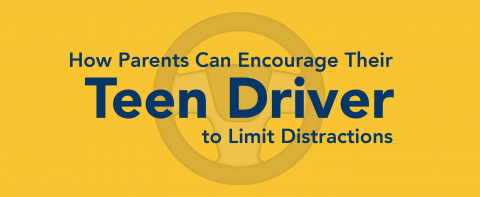
I’m sure you’re all too familiar with the frequency in which your teen texts, but did you know that texting while driving is the most dangerous distraction? In fact, people who text while driving are 23 times more likely to be involved in a crash. That’s why it’s important to understand that when your teen texts, they are simultaneously participating in three areas of distraction. That’s right — three different distractions at the same time!
Types of Distractions
- Visual distraction: Taking your eyes off the road.
- Manual distraction: Taking your hands off the wheel.
- Cognitive Distraction: Taking your mind off of driving.
What is Distracted Driving?
Distracted driving is any activity that could divert a person’s attention away from the primary task of driving. All distractions endanger driver, passenger, and bystander safety. Driver distractions include:
- Texting, talking or swiping on a cell phone
- Eating and drinking
- Talking to passengers
- Grooming (makeup, shaving, etc.)
- Reading
- Using a navigation system
- Watching a video
- Adjusting the audio system
- Other vehicles
- Looking at pedestrians
Actions You Can Take to Limit Your Teen’s Distractions
-
- Encourage your teen to park when making phone calls or texts. Even using hands-free technology is considered a distraction while driving and it can be dangerous. If encouragement isn’t quite enough, well, there’s an app for that! View a list of recommended apps compatible with your teen’s phone that will not permit cell phone use while driving. In addition, have your teen attend a Just Hang It Up event. Top Driver has partnered with the Just Hang It Up Program which is a student-led nonprofit that teaches the dangers of distracted driving with their driving simulators. Peers are more likely to influence change in behavior.
- Enforce curfews. Teens really shouldn’t be driving late at night. Come up with a fair curfew time to ensure they’re off the road. Most accidents occur at night, so make sure to communicate that with your teen. Also, there are other options available should your teen need a ride home past curfew. Have an adult drive or have your teen request an Uber, Lyft or taxi service — whatever you’re most comfortable with.
- Place a limit on the number of passengers. Fewer passengers means fewer opportunities for distraction.
- Award good driving habits. Is your teen driving well? Tell them! Praise, affirmation, and rewards go far in reinforcing safe driving. Develop a few rewards your teen can earn by exhibiting good judgment and driving habits.
When it’s all said and done, you know your child the best. Develop a safe driving plan that will work best for your family. Consider registering for our Top Driver Parent Care Program. This two-part program will equip you with strategies you need to keep your teen drivers safe and reduce their risk of becoming another statistic.
Interested in learning more? Click here to check out our full list of Top Driver safe driving tips. As always, stay vigilant, prepared and — slow down!
